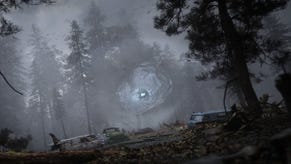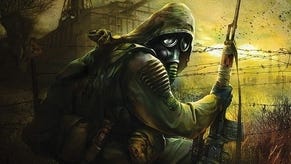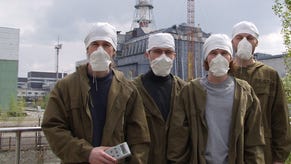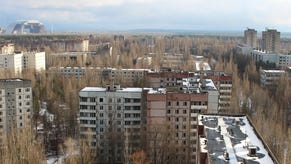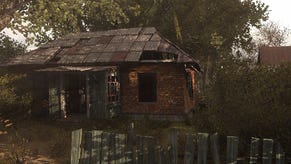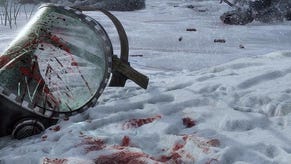S.T.A.L.K.E.R.: Clear Sky
Restraining orders.
The first moment that comes to mind when thinking of the original Stalker (we'll dispense with "S.T.A.L.K.E.R." if that's alright) is from my first playthrough. I'm descending into one of the toxic Ukranian underworlds and come across something that makes me stop and laugh. A paint-pot is levitating, bouncing against the ceiling and twitching spasmodically. I'm playing it in a room with fellow journalists, so call them over to have a giggle at Stalker having one of its very special moments.
Everyone has just enough time to gather before it comes hurtling at my head causing a mass panicked jump and me diving at the controls to run back the way I came. It wasn't a bug. It was a poltergeist. To me, it kind of sums up the best of Stalker - its sheer vigour and determination to summon a world completely overwhelming your expectations (and experience) of technical foibles. Stalker overcame its weaknesses. Clear Sky - while interesting in half a dozen ways - ultimately doesn't.
It's a graphically improved prequel that integrates a mass of things that were promised for Stalker with assorted game tweaks that - on paper - sound as if they'd improve the immersion of the game considerably. In practice, it mainly shows that there are no good or bad ideas: only good and bad executions.
The core of the game remains the same. You play an eponymous stalkyguy operating in the Zone around Chernobyl where reality has been rent apart as reality tends to be. Mutants roam the land. Anomalies dot the landscape - often invisible counter-natural singularities which maim or kill anyone who walks into them. However, they also act as portals by which artifacts have arrived - and it's these alien items which have brought the Stalkers to the zone. Various factions populate the area, each acting according to its own desires. For example, the Bandits are only after wealth, but Duty are trying to fight against the increasing insanity of the Zone. It plays much like any realistic-edged FPS does, but with minor RPG elements (you can improve your equipment or equip ability-improving artifacts) and it's in a living open-world. It's basically Oblivion with gu... oh, we've used that one before. And there's still a load of bugs.
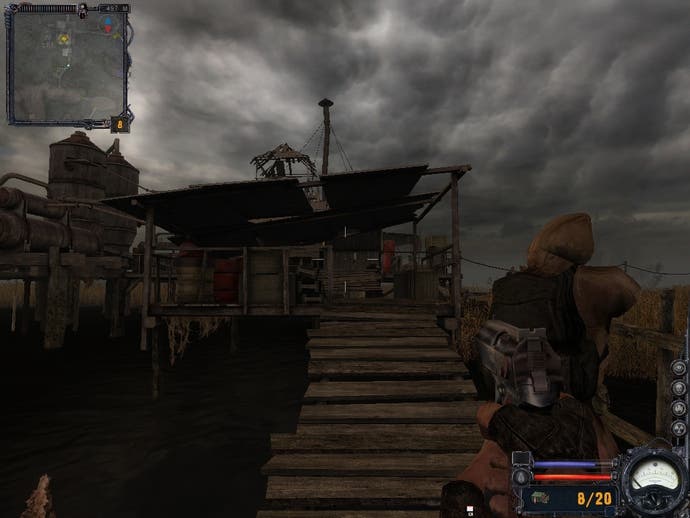
It's understandably familiar. As a prequel, there's a lot of visiting areas you met in the later game and seeing them in a different light. Putting aside the graphical improvements (in short: the graphics have been improved), the biggest changes are an increase in character-customisation and reworking of its A-Life system, which manages the simulacra of life in the Zone. The most obvious effect of this is that there seems to be a far greater sense of a war being fought, which is pretty much because there is a war being fought between one faction and another. Units of each will head off to try and secure or defend mission points, often generating an on-the-fly mission for you to go and try and help. You'll regularly - well, constantly would be nearer the point - have people shouting that they're about to be overwhelmed and need help. Like, quickly and stuff.
The character-customisation is equally welcome. Weapons simply have many more options available - you're able to repair and improve them in multiple ways with the help of specialist characters, spending incrementally more money to improve a gun's accuracy, magazine size or many other aspects, often in ways which preclude a further advance in another area. Or in crude terms: if you make an assault rifle more suitable for sniping, you'll be excluded from the advances which develop it into a close-quarters storming weapon. Similar advances are available for the armour, and some of the higher-tier abilities require you to locate a flash-drive with the plans. Without going fully RPG - which would break Stalker completely, I suspect - this is about as powerful and interesting system you could integrate.
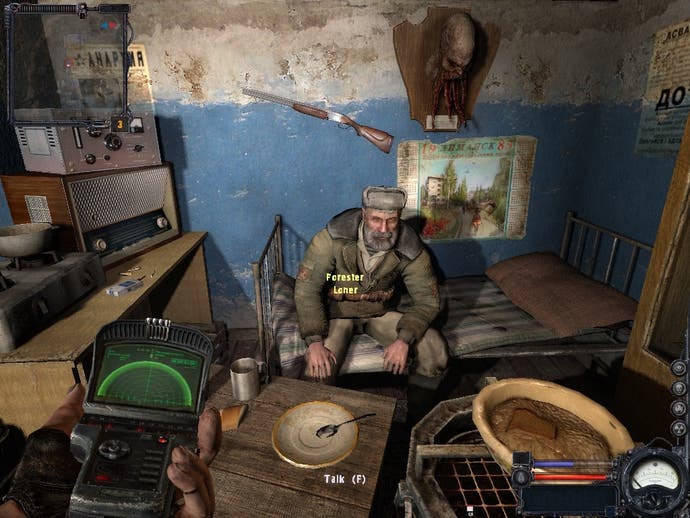
The other half of the character-customisation system has been downplayed in importance, however - well, not "in importance" but "as a core part of your experience". The original game was criticised for having artifacts far too easily available, often littering the floor near anomalies so you could easily gather and sell them for enormous profits, keeping the good ones for yourself. This time, obtaining an artifact is an actual achievement. First, they're invisible, so you have to locate them via a detector, which tells you their proximity - and, I believe, you have to be looking right at them. Actually, that's not first, it's second, as you have to actually get close enough, which means working your way through (also mostly invisible) anomalies which you detect by lobbing nuts ahead of you and surviving whatever radioactive/chemical/psychic hazards are in the area by having good enough armour or anti-rad drugs or whatever.
On the surface, both of these seem splendid additions. The first means that there's plenty of stuff to spend your cash on and the latter means that artifacts become meaningful, strange and spooky. It did seem odd that anyone was trying to rob one another in the first game's Zone when there was this fancy stuff lying everywhere.


